The early 2000s saw the climb of fast fashion. With globalization, and the ability to cut costs through outsourcing, brands such as H&M and Forever 21 were able to mimic runway looks at a fraction of the cost. This resulted in the collapse of
class structures defined by fashion. High and low trends were mixed, and as clothing became cheap, everyone was able to save up for designer accessories. At the turn of the millennium, men’s fashion experienced a brief “futuristic” wave. Black,
silver, and metallic were in. Men wore leather outfits, puffy jackets, tracksuits, and Rockport boots.In the mid-2000s, styles sobered as the US entered war. Distressed denim became popular, along with military wear as everyday clothes. Popular
colors included beige, rust, and forest green, and men wore low-rise jeans, light-colored polos, cargo pants, khakis, and short sleeved button-downs. Accessories such as white belts, aviators, trucker hats, flip-flops, Argyle print, and oxford
shoes were also in. Suits became slimmer, and popular styles included black, navy, charcoal, and pinstripes. Nehru suits and Mandarin collars, inspired by James Bond and the Matrix, began to emerge. Men favored the smart casual look with flat
front chinos, beige cardigans, Argyll pullovers, and houndstooth sports coats. Youth fashion was inspired by hip-hop and skater culture, mixing sportswear with high fashion. Sneakers, from Chuck Taylors to Nike Air Jordans, became hot items.
At the same time, goth and indie pop subcultures developed. People became interested in vintage thrift store shopping and adopting a darker, rocker aesthetic–a twist on British mod. The early 2010s experienced a revival of ’20s prep style,
along with an exponential rise in fast fashion and globalization. Smart casual looks, athleisure, along with hipster fashions were on trend. Does everyone remember the fedoras, non-prescription glasses, and rave bracelets of the recent past?
These items seemed to signal our joint enlightenment as the human race. One love, y’all. The early 2000s saw the climb of fast fashion. With globalization, and the ability to cut costs through outsourcing, brands such as H&M and Forever 21
were able to mimic runway looks at a fraction of the cost. This resulted in the collapse of class structures defined by fashion. High and low trends were mixed, and as clothing became cheap, everyone was able to save up for designer accessories.
At the turn of the millennium, men’s fashion experienced a brief “futuristic” wave. Black, silver, and metallic were in. Men wore leather outfits, puffy jackets, tracksuits, and Rockport boots.In the mid-2000s, styles sobered as the US entered
war. Distressed denim became popular, along with military wear as everyday clothes. Popular colors included beige, rust, and forest green, and men wore low-rise jeans, light-colored polos, cargo pants, khakis, and short sleeved button-downs.
Accessories such as white belts, aviators, trucker hats, flip-flops, Argyle print, and oxford shoes were also in. Suits became slimmer, and popular styles included black, navy, charcoal, and pinstripes. Nehru suits and Mandarin collars, inspired
by James Bond and the Matrix, began to emerge. Men favored the smart casual look with flat front chinos, beige cardigans, Argyll pullovers, and houndstooth sports coats. Youth fashion was inspired by hip-hop and skater culture, mixing sportswear
with high fashion. Sneakers, from Chuck Taylors to Nike Air Jordans, became hot items. At the same time, goth and indie pop subcultures developed. People became interested in vintage thrift store shopping and adopting a darker, rocker aesthetic–a
twist on British mod. The early 2010s experienced a revival of ’20s prep style, along with an exponential rise in fast fashion and globalization. Smart casual looks, athleisure, along with hipster fashions were on trend. Does everyone remember
the fedoras, non-prescription glasses, and rave bracelets of the recent past? These items seemed to signal our joint enlightenment as the human race. One love, y’all. The early 2000s saw the climb of fast fashion. With globalization, and the
ability to cut costs through outsourcing, brands such as H&M and Forever 21 were able to mimic runway looks at a fraction of the cost. This resulted in the collapse of class structures defined by fashion. High and low trends were mixed, and
as clothing became cheap, everyone was able to save up for designer accessories. At the turn of the millennium, men’s fashion experienced a brief “futuristic” wave. Black, silver, and metallic were in. Men wore leather outfits, puffy jackets,
tracksuits, and Rockport boots.In the mid-2000s, styles sobered as the US entered war. Distressed denim became popular, along with military wear as everyday clothes. Popular colors included beige, rust, and forest green, and men wore low-rise
jeans, light-colored polos, cargo pants, khakis, and short sleeved button-downs. Accessories such as white belts, aviators, trucker hats, flip-flops, Argyle print, and oxford shoes were also in. Suits became slimmer, and popular styles included
black, navy, charcoal, and pinstripes. Nehru suits and Mandarin collars, inspired by James Bond and the Matrix, began to emerge. Men favored the smart casual look with flat front chinos, beige cardigans, Argyll pullovers, and houndstooth sports
coats. Youth fashion was inspired by hip-hop and skater culture, mixing sportswear with high fashion. Sneakers, from Chuck Taylors to Nike Air Jordans, became hot items. At the same time, goth and indie pop subcultures developed. People became
interested in vintage thrift store shopping and adopting a darker, rocker aesthetic–a twist on British mod. The early 2010s experienced a revival of ’20s prep style, along with an exponential rise in fast fashion and globalization. Smart casual
looks, athleisure, along with hipster fashions were on trend. Does everyone remember the fedoras, non-prescription glasses, and rave bracelets of the recent past? These items seemed to signal our joint enlightenment as the human race. One
love, y’all. The early 2000s saw the climb of fast fashion. With globalization, and the ability to cut costs through outsourcing, brands such as H&M and Forever 21 were able to mimic runway looks at a fraction of the cost. This resulted in
the collapse of class structures defined by fashion. High and low trends were mixed, and as clothing became cheap, everyone was able to save up for designer accessories. At the turn of the millennium, men’s fashion experienced a brief “futuristic”
wave. Black, silver, and metallic were in. Men wore leather outfits, puffy jackets, tracksuits, and Rockport boots.In the mid-2000s, styles sobered as the US entered war. Distressed denim became popular, along with military wear as everyday
clothes. Popular colors included beige, rust, and forest green, and men wore low-rise jeans, light-colored polos, cargo pants, khakis, and short sleeved button-downs. Accessories such as white belts, aviators, trucker hats, flip-flops, Argyle
print, and oxford shoes were also in. Suits became slimmer, and popular styles included black, navy, charcoal, and pinstripes. Nehru suits and Mandarin collars, inspired by James Bond and the Matrix, began to emerge. Men favored the smart
casual look with flat front chinos, beige cardigans, Argyll pullovers, and houndstooth sports coats. Youth fashion was inspired by hip-hop and skater culture, mixing sportswear with high fashion. Sneakers, from Chuck Taylors to Nike Air Jordans,
became hot items. At the same time, goth and indie pop subcultures developed. People became interested in vintage thrift store shopping and adopting a darker, rocker aesthetic–a twist on British mod. The early 2010s experienced a revival of
’20s prep style, along with an exponential rise in fast fashion and globalization. Smart casual looks, athleisure, along with hipster fashions were on trend. Does everyone remember the fedoras, non-prescription glasses, and rave bracelets
of the recent past? These items seemed to signal our joint enlightenment as the human race. One love, y’all. The early 2000s saw the climb of fast fashion. With globalization, and the ability to cut costs through outsourcing, brands such as
H&M and Forever 21 were able to mimic runway looks at a fraction of the cost. This resulted in the collapse of class structures defined by fashion. High and low trends were mixed, and as clothing became cheap, everyone was able to save up
for designer accessories. At the turn of the millennium, men’s fashion experienced a brief “futuristic” wave. Black, silver, and metallic were in. Men wore leather outfits, puffy jackets, tracksuits, and Rockport boots.In the mid-2000s, styles
sobered as the US entered war. Distressed denim became popular, along with military wear as everyday clothes. Popular colors included beige, rust, and forest green, and men wore low-rise jeans, light-colored polos, cargo pants, khakis, and
short sleeved button-downs. Accessories such as white belts, aviators, trucker hats, flip-flops, Argyle print, and oxford shoes were also in. Suits became slimmer, and popular styles included black, navy, charcoal, and pinstripes. Nehru suits
and Mandarin collars, inspired by James Bond and the Matrix, began to emerge. Men favored the smart casual look with flat front chinos, beige cardigans, Argyll pullovers, and houndstooth sports coats. Youth fashion was inspired by hip-hop
and skater culture, mixing sportswear with high fashion. Sneakers, from Chuck Taylors to Nike Air Jordans, became hot items. At the same time, goth and indie pop subcultures developed. People became interested in vintage thrift store shopping
and adopting a darker, rocker aesthetic–a twist on British mod. The early 2010s experienced a revival of ’20s prep style, along with an exponential rise in fast fashion and globalization. Smart casual looks, athleisure, along with hipster
fashions were on trend. Does everyone remember the fedoras, non-prescription glasses, and rave bracelets of the recent past? These items seemed to signal our joint enlightenment as the human race. One love, y’all. The early 2000s saw the climb
of fast fashion. With globalization, and the ability to cut costs through outsourcing, brands such as H&M and Forever 21 were able to mimic runway looks at a fraction of the cost. This resulted in the collapse of class structures defined by
fashion. High and low trends were mixed, and as clothing became cheap, everyone was able to save up for designer accessories. At the turn of the millennium, men’s fashion experienced a brief “futuristic” wave. Black, silver, and metallic were
in. Men wore leather outfits, puffy jackets, tracksuits, and Rockport boots. In the mid-2000s, styles sobered as the US entered war. Distressed denim became popular, along with military wear as everyday clothes. Popular colors included beige,
rust, and forest green, and men wore low-rise jeans, light-colored polos, cargo pants, khakis, and short sleeved button-downs. Accessories such as white belts, aviators, trucker hats, flip-flops, Argyle print, and oxford shoes were also in.
Suits became slimmer, and popular styles included black, navy, charcoal, and pinstripes. Nehru suits and Mandarin collars, inspired by James Bond and the Matrix, began to emerge. Men favored the smart casual look with flat front chinos, beige
cardigans, Argyll pullovers, and houndstooth sports coats. Youth fashion was inspired by hip-hop and skater culture, mixing sportswear with high fashion. Sneakers, from Chuck Taylors to Nike Air Jordans, became hot items. At the same time,
goth and indie pop subcultures developed. People became interested in vintage thrift store shopping and adopting a darker, rocker aesthetic–a twist on British mod. The early 2010s experienced a revival of ’20s prep style, along with an exponential
rise in fast fashion and globalization. Smart casual looks, athleisure, along with hipster fashions were on trend. Does everyone remember the fedoras, non-prescription glasses, and rave bracelets of the recent past? These items seemed to signal
our joint enlightenment as the human race. One love, y’all. In the mid-2000s, styles sobered as the US entered war. Distressed denim became popular, along with military wear as everyday clothes. Popular colors included beige, rust, and forest
green, and men wore low-rise jeans, light-colored polos, cargo pants, khakis, and short sleeved button-downs. Accessories such as white belts, aviators, trucker hats, flip-flops, Argyle print, and oxford shoes were also in. Suits became slimmer,
and popular styles included black, navy, charcoal, and pinstripes. Nehru suits and Mandarin collars, inspired by James Bond and the Matrix, began to emerge. Men favored the smart casual look with flat front chinos, beige cardigans, Argyll
pullovers, and houndstooth sports coats. Youth fashion was inspired by hip-hop and skater culture, mixing sportswear with high fashion. Sneakers, from Chuck Taylors to Nike Air Jordans, became hot items. At the same time, goth and indie pop
subcultures developed. People became interested in vintage thrift store shopping and adopting a darker, rocker aesthetic–a twist on British mod. The early 2010s experienced a revival of ’20s prep style, along with an exponential rise in fast
fashion and globalization. Smart casual looks, athleisure, along with hipster fashions were on trend. Does everyone remember the fedoras, non-prescription glasses, and rave bracelets of the recent past? These items seemed to signal our joint
enlightenment as the human race. One love, y’all.

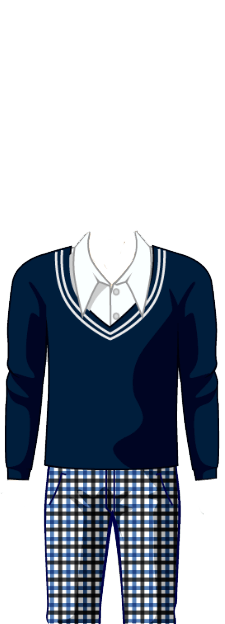
Saturday
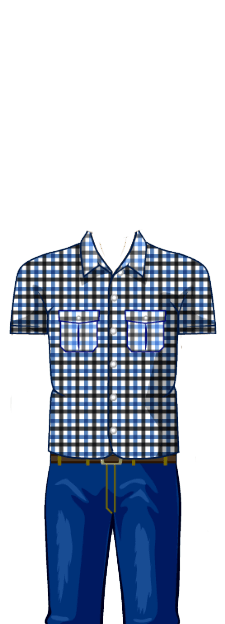
Chess & Checkers
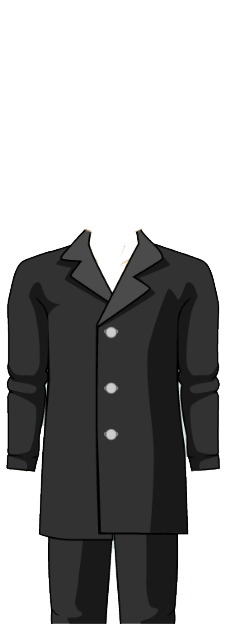
Private Investigator
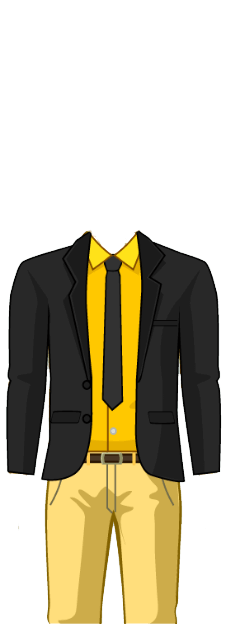
Summer Time
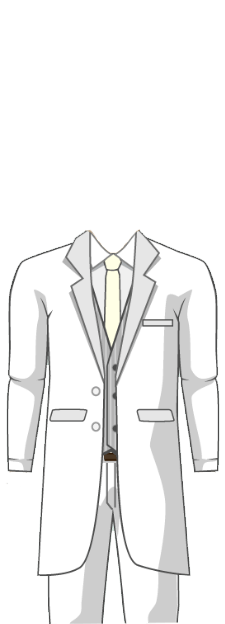
Saying 'I Do'
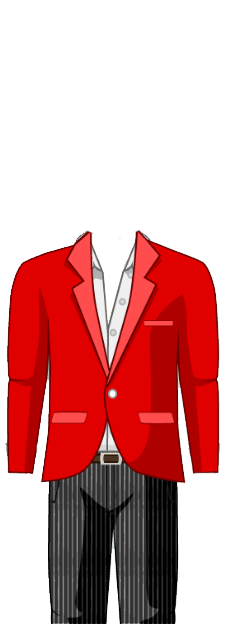
Roses are red